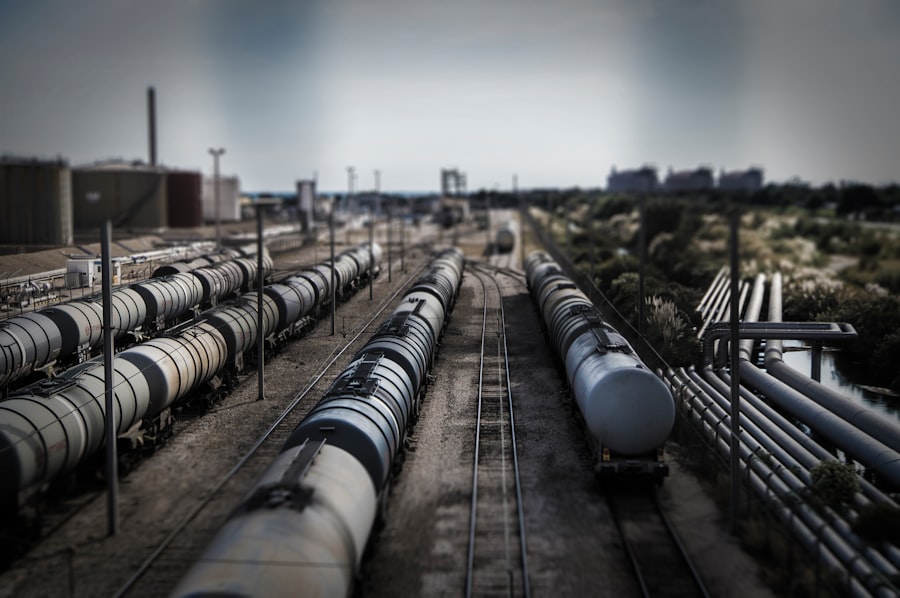The Nord Stream explosion, a significant event in the realm of international energy security, has drawn attention from governments, environmentalists, and the global public alike. This incident, which occurred in late September 2022, involved a series of underwater explosions that damaged the Nord Stream pipelines, which are crucial conduits for natural gas from Russia to Europe. The ramifications of this explosion extend beyond immediate physical damage; they raise questions about geopolitical tensions, energy dependency, and environmental safety.
As nations grapple with the implications of this incident, it becomes essential to delve into the background of the Nord Stream pipeline, the details surrounding the explosion, and the subsequent investigations that sought to uncover the truth. The explosion not only disrupted energy supplies but also sparked a wave of speculation regarding its causes and potential perpetrators. With Europe already facing an energy crisis exacerbated by geopolitical conflicts, the destruction of such a vital infrastructure raised alarms about the fragility of energy security in the region.
The incident has prompted discussions about the need for enhanced protective measures for critical infrastructure and has highlighted the interconnectedness of energy politics and environmental concerns. As investigations unfold, the world watches closely, eager to understand the full scope of this incident and its implications for future energy policies.
Key Takeaways
- The Nord Stream pipeline explosion has raised concerns about the safety of natural gas infrastructure.
- The Nord Stream pipeline is a major natural gas pipeline that runs from Russia to Germany, providing a significant portion of Europe’s natural gas supply.
- The explosion incident occurred at a specific section of the pipeline, causing significant damage and disrupting gas supply.
- Initial investigation and findings suggest that the explosion may have been caused by a combination of factors, including structural issues and external interference.
- Forensic analysis techniques, including examination of physical, chemical, biological, and digital evidence, were used to reconstruct the explosion and identify potential causes.
Background of Nord Stream Pipeline
The Nord Stream pipeline system consists of two major pipelines that transport natural gas from Russia to Germany via the Baltic Sea. Launched in 2011, Nord Stream 1 was designed to provide a direct route for Russian gas to reach European markets, bypassing traditional transit countries. This strategic infrastructure was hailed as a significant achievement in energy cooperation between Russia and Europe, facilitating a steady supply of natural gas to meet growing energy demands.
In 2021, the construction of Nord Stream 2 was completed, further solidifying this energy link and raising concerns among various stakeholders about Europe’s reliance on Russian gas. The geopolitical landscape surrounding the Nord Stream pipelines is complex. While they have been instrumental in ensuring energy security for many European nations, they have also been a point of contention in international relations.
Critics argue that reliance on Russian gas compromises European energy independence and exposes countries to potential political leverage from Moscow. The pipelines have been at the center of debates regarding energy policy, environmental impact, and national security, making them a focal point in discussions about Europe’s energy future.
Description of the Explosion Incident

On September 26, 2022, a series of underwater explosions rocked the Nord Stream pipelines, resulting in significant damage and gas leaks into the Baltic Sea. The explosions were detected by seismological monitoring stations in Sweden and Denmark, which recorded unusual seismic activity consistent with blasts rather than natural phenomena. The immediate aftermath saw large bubbles rising to the surface as natural gas escaped into the atmosphere, creating a visible spectacle that drew attention from nearby vessels and aircraft.
The explosions occurred in close proximity to each other, with reports indicating that multiple blasts were involved. Initial assessments suggested that the damage was extensive, with both Nord Stream 1 and Nord Stream 2 suffering breaches. The incident raised urgent concerns about environmental impacts due to methane emissions and potential harm to marine ecosystems.
Furthermore, it ignited a flurry of speculation regarding who might be responsible for such an act of sabotage, with various theories emerging in the media and among political analysts.
Initial Investigation and Findings
| Investigation Stage | Findings |
|---|---|
| Interviews | Identified key stakeholders and their perspectives |
| Document Review | Uncovered relevant information and patterns |
| Data Analysis | Highlighted trends and anomalies |
In the wake of the explosions, several countries initiated investigations to determine the cause and responsibility for the incident. Denmark and Sweden took the lead due to their proximity to the explosion sites, while Germany also played a crucial role given its reliance on the pipelines for energy supply. The initial findings indicated that the damage was consistent with deliberate sabotage rather than accidental failure or natural causes.
This conclusion heightened tensions among nations already embroiled in geopolitical disputes. As investigators combed through evidence and gathered testimonies from witnesses in nearby areas, they faced challenges due to the underwater nature of the crime scene. The complexity of conducting investigations in such an environment necessitated collaboration among various agencies and countries.
The initial findings pointed towards a coordinated effort to damage the pipelines, but definitive conclusions regarding responsibility remained elusive as investigations continued.
Forensic Analysis Techniques Used
To unravel the mystery behind the Nord Stream explosion, investigators employed a range of forensic analysis techniques tailored to underwater crime scenes. These methods included underwater robotics equipped with high-resolution cameras and sensors capable of capturing detailed images of the damaged pipelines. Such technology allowed investigators to assess the extent of the damage and gather crucial evidence that could shed light on how the explosions occurred.
In addition to visual inspections, forensic teams utilized sonar mapping to create detailed topographical maps of the seabed around the explosion sites. This data was essential for understanding the blast radius and identifying any remnants or debris that could provide clues about explosives used in the attack. The combination of advanced imaging technology and traditional forensic methods enabled investigators to piece together a clearer picture of the events leading up to and following the explosions.
Examination of Physical Evidence

The examination of physical evidence from the explosion sites proved critical in understanding how the attacks were executed. Investigators focused on collecting samples from both the damaged pipelines and surrounding sediment to analyze any residues left behind by explosives. This meticulous process involved carefully documenting each piece of evidence while ensuring that contamination was minimized.
Physical evidence also included fragments of materials that may have been used in constructing explosive devices. By analyzing these remnants, forensic experts aimed to identify specific types of explosives or techniques employed in carrying out the sabotage. Such analyses could potentially link the attack to known groups or individuals with expertise in underwater demolition or sabotage operations.
Analysis of Chemical and Biological Evidence
In addition to physical evidence, investigators turned their attention to chemical and biological analyses to gain further insights into the explosion’s origins. Samples collected from gas leaks were analyzed for their chemical composition, which could provide clues about whether any unusual substances were present that might indicate tampering or sabotage. Biological evidence was also considered, particularly concerning potential environmental impacts resulting from methane emissions into the Baltic Sea.
Investigators sought to understand how these emissions might affect marine life and ecosystems in the area surrounding the explosion sites. Such analyses not only contributed to understanding the incident but also highlighted broader environmental concerns associated with energy infrastructure vulnerabilities.
Examination of Digital Evidence
As part of their comprehensive investigation, authorities recognized that digital evidence could play a pivotal role in uncovering details about the Nord Stream explosion. This included analyzing communications between various stakeholders involved in energy politics as well as monitoring digital footprints related to maritime activities near the explosion sites. Investigators sought to trace any suspicious activities leading up to the explosions through satellite imagery and tracking data from vessels operating in proximity to the pipelines.
By piecing together this digital puzzle, authorities aimed to identify any potential perpetrators or groups that may have had motives for carrying out such an act against critical infrastructure.
Reconstruction of the Explosion
Reconstructing the events leading up to and following the Nord Stream explosion required synthesizing all available evidence into a coherent narrative. Forensic experts collaborated with engineers and analysts to create simulations that illustrated how explosives might have been deployed against the pipelines. These reconstructions helped clarify key questions regarding timing, method, and potential escape routes for those responsible.
The reconstruction process also involved assessing how external factors such as weather conditions or maritime traffic might have influenced both the execution of the attack and subsequent investigations. By understanding these dynamics, investigators aimed to build a comprehensive timeline that could aid in identifying those responsible for this unprecedented act against critical energy infrastructure.
Conclusion and Implications
The Nord Stream explosion represents not only a significant act of sabotage but also a turning point in discussions surrounding energy security and geopolitical tensions in Europe. As investigations continue to unfold, they reveal deeper insights into vulnerabilities within critical infrastructure systems that nations rely upon for their energy needs. The implications extend beyond immediate concerns about gas supply; they raise questions about how countries can safeguard their energy resources against future threats.
Moreover, this incident has underscored the importance of international cooperation in addressing shared challenges related to energy security and environmental protection. As nations grapple with complex interdependencies within global energy markets, it becomes increasingly clear that collaborative efforts are essential for ensuring resilience against potential disruptions caused by sabotage or other malicious acts.
Recommendations for Future Safety Measures
In light of the Nord Stream explosion and its far-reaching implications, experts recommend several safety measures aimed at protecting critical energy infrastructure from similar threats in the future. First and foremost is enhancing surveillance capabilities around vital pipelines through advanced monitoring technologies such as drones equipped with sensors capable of detecting unusual activities or potential threats. Additionally, fostering international collaboration among nations regarding intelligence sharing can help identify emerging risks associated with energy infrastructure vulnerabilities.
Establishing joint task forces focused on safeguarding critical assets may prove beneficial in developing proactive strategies against potential sabotage attempts. Finally, investing in research aimed at developing more resilient pipeline designs could mitigate risks associated with underwater explosions or other forms of attack.
In the wake of the Nord Stream explosion, forensic analysis has become a crucial component in understanding the incident’s underlying causes and potential implications. A related article that delves into the complexities of such forensic investigations can be found on the website “In The War Room.” This article provides insights into the methodologies used in forensic analysis and the broader geopolitical ramifications of the Nord Stream incident.




